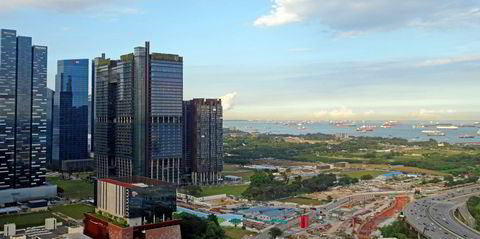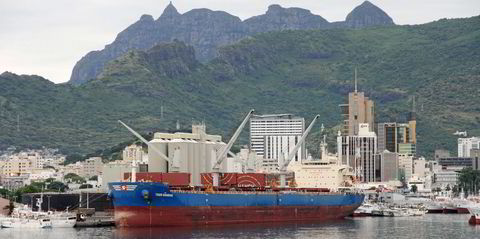Just as Rome wasn’t built in a day, shipping will not be able to switch over to less emitting fuels in a day. It is a hard-to-abate industry. We call for more realism to be embedded in the fuel debate and the upcoming regulations.
To reduce shipping’s carbon footprint, we need to abandon the most economical and efficient fuel — heavy fuel oil, also known as HFO — for less economical and/or lesser efficient alternatives.
To decarbonise the world fleet will take time and be very costly. Without worldwide, clear, realistic and straightforward regulations the sector risks making suboptimal decisions that lead to suboptimal results.
While the industry is working on new technologies to reduce the cost of “green” fuels, more focus should be put on upcoming regulations to allow for low-carbon solutions in general.
Combining the existing worldwide infrastructure for fossil fuels with carbon capture, storage and utilisation and producing “blue” or rather low-carbon fuels will be a quick win and the only realistic solution in the short to medium term to reduce the carbon footprint of shipping.
Today, however, this seems out of sight of the regulators as per the current state of play.
For example, the European Union Emissions Trading System and FuelEU Maritime regulations do not allow owners to take the full benefit of low-carbon fuels. Likewise, the regulations from the International Maritime Organization are seriously lagging behind the technology evolution.
Under existing rules, Exmar’s ammonia-fuelled gas tankers, to be delivered in 2026, will be prohibited from using ammonia as fuel while a container ship or bulk carrier will be allowed.
This is because of an outdated IGC Code — the International Code for the Construction and Equipment of Ships Carrying Liquefied Gases in Bulk — and boxships and bulkers fall under a different code.
This is obviously totally illogical and disregards completely the experience and capabilities held on board an ammonia carrier for handling the product.
The continuously changing targets and significant gaps between localised regulations — for example between the EU and worldwide regulations under the IMO — will not help shipowners to make strategic decisions.
First of all, we should not forget that shipping is the most environmentally friendly solution to transport goods. Per tonne transported, shipping emits the least CO2 compared with all other transport alternatives.
Investment dilemma
Shipping needs to be further promoted to take on as much cargo as possible because it is by far the cleanest way of transportation. This needs to be taken into account when setting certain greenhouse gas emission reduction targets.
Second, ships are built with the intention of being economically and technically operational for around 25 years. With uncertainties regarding future regulations and technical solutions, making investment decisions becomes challenging, if not impossible. The risk is that HFO will remain the primary fuel, defeating the ambitions to decarbonise the world fleet.
Hence this call to our regulators — the shipping community is ready to make significant investments to further minimise the impact on our planet, but we need realistic targets, clear guidelines and most of all the flexibility to allow for new technologies to be used.
Carl-Antoine Saverys is the executive director at
Belgian shipowner and infrastructure
provider Exmar






